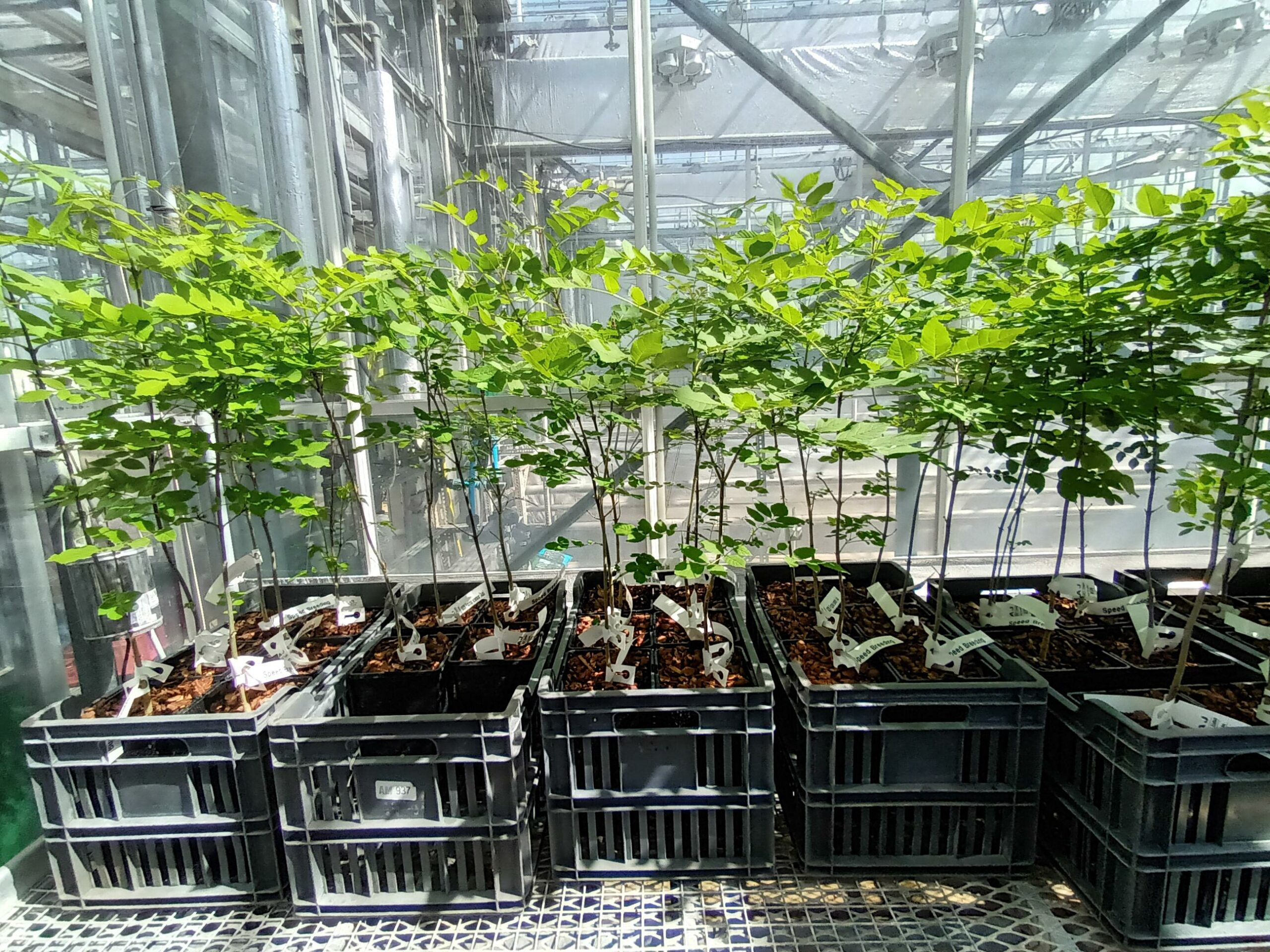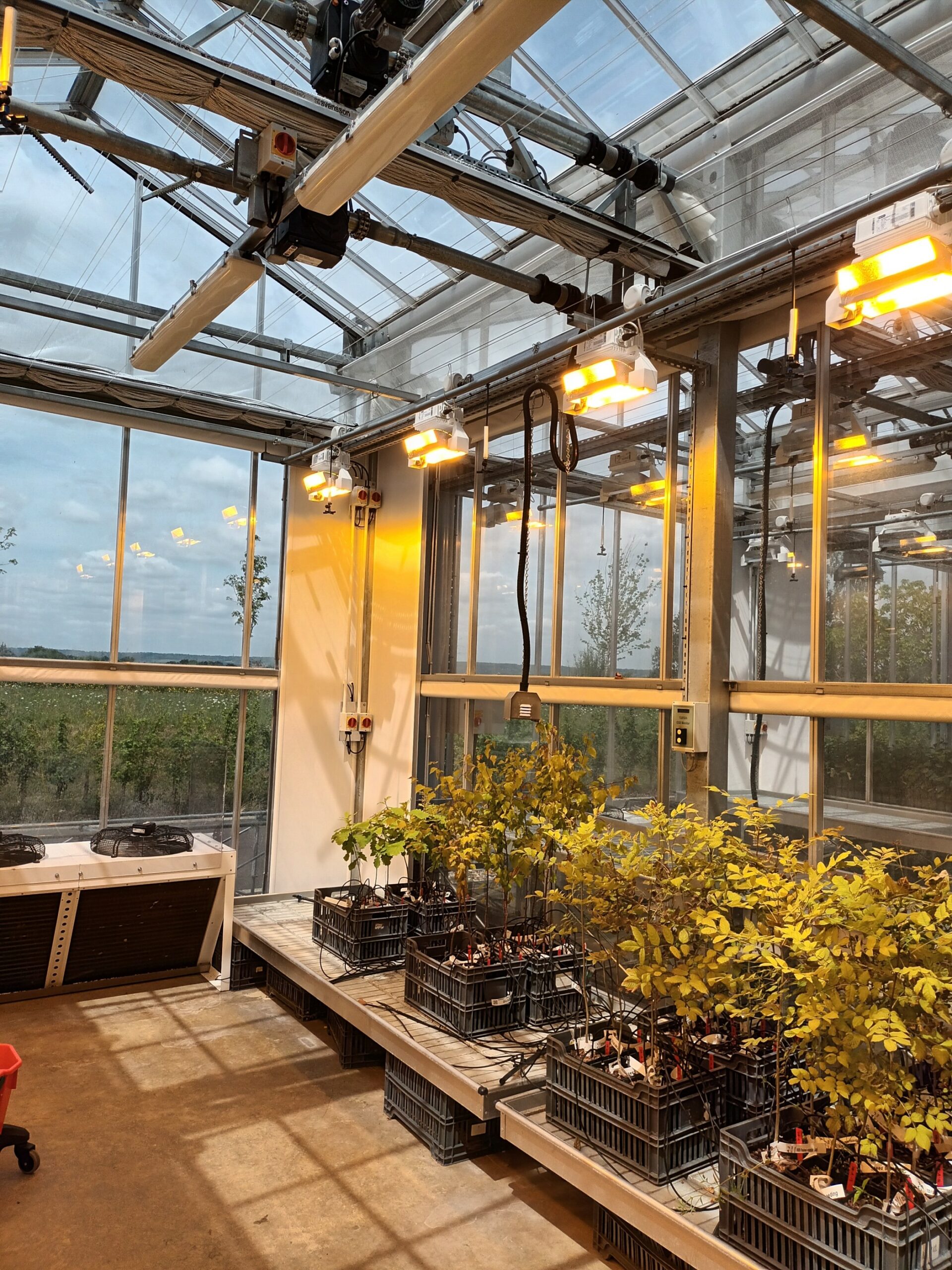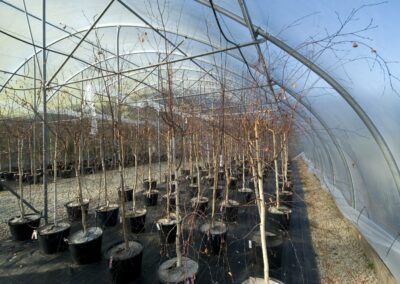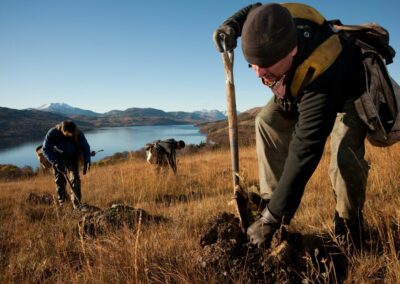Speed breeding technologies for UK broadleaved trees
Context
However, trees can take many years to flower for the first time (their ‘juvenile’ stage), meaning that breeding is still a slow process. One way to get around this is to make trees flower earlier, using a technique called ‘speed breeding’ which has already been successful in annual crops such as cereals, and does not change the trees genetically.
Scientists at Niab have been able to make apple trees flower years earlier by growing them under conditions with longer daylight hours, high carbon dioxide, and short artificial winters. This project will now test whether the same method can work for silver birch (Betula pendula), oak (Quercus Robur), and ash (Fraxinus excelsior), with a focus on the latter due to the threats faced both from ash dieback (Hymenoscyphus fraxineus) and emerald ash borer (Agrilus planipennis).
Research aims and objectives
Aim:
Trigger early flowering in ash via environmental manipulation: using long day lengths, high carbon dioxide, and artificially short winters.
Objectives:
- Experiment on ash saplings, a proportion of which will be descended from parents resistant to ash dieback, which may be a resource for future breeding programmes.
- Test silver birch under the same conditions – silver birch has previously been shown to flower early under speed breeding treatments, so will be the control in the experiment.
- Test a small number of oak saplings under the same conditions – oak usually takes much longer to start flowering (25-40 years), and so speed breeding treatments may not be successful.
- Compare how genes behave differently in trees grown with speed breeding methods compared to control conditions in all three species. By doing this over time, a better understanding of the genetic changes that help trees to flower faster will be gained.
- Test a diverse population of ash trees from across the country will be collected to see if there are genetic differences that make ash more or less responsive to speed breeding.
Expected outcomes
- Establish that speed breeding can be achieved in ash and oak trees.
- Create a reliable method to make UK broadleaved tree species flower earlier.
- Map the genetic changes that happen in birch, ash, and oak under speed breeding conditions, to see if they share the same response. This will help to enable future prediction of whether speed breeding will work in other tree species and improve the method in future.
- Identify whether certain ash trees are more responsive to speed breeding conditions than others and identify which genes may be responsible.
Further resources linked to this project
News: Speed Breeding Project Takes Root at Niab, East Malling (Nov 13, 2025)
On 21 October, the team behind Centre for Forest Protection Phase 2 project ‘Speed Breeding Technologies for UK Broadleaved Trees’ held their first in-person meeting to inspect their trees in person after the first season under speed breeding conditions. Read more: Speed Breeding Project Takes Root at Niab, East Malling.
Title image: Abi Johnson, Niab East Malling
Body image: Abi Johnson, Niab East Malling
Glossary & Key Terms
Ash (Fraxinus excelsior)
Ash is under severe threat from ash dieback disease (Hymenoscyphus fraxineus), and its abundance in the British landscape is likely to decrease. The ability to plant ash is now severely restricted due to concerns over tree health. Ash is categorised as a principal tree species. For more information, see Ash (AH) – Forest Research.
Ash dieback (Hymenoscyphus fraxineus)
Broadleaved
Emerald ash borer (Agrilus planipennis)
Genetic markers
Oak (Quercus)
There are two native oak species in the UK: pedunculate oak (Quercus robur) and sessile oak (Quercus petraea), and three non-native species: turkey oak (Quercus cerris), holm oak (Quercus ilex), cork oak (Quercus suber). For more information, see Oak Trees – Forest Research.
Pathogen
Silver birch (Betula pendula)
Speed breeding
Share this project on social media
Related Projects
Our Partners
Social media
Explore
Newsletter
Contact
© 2022 Centre for Forest Protection. All rights reserved.



